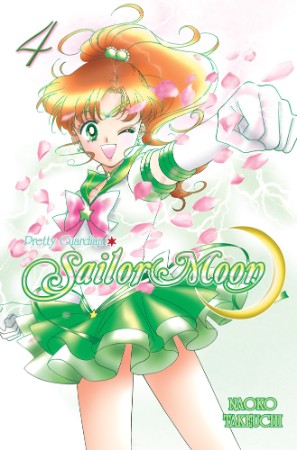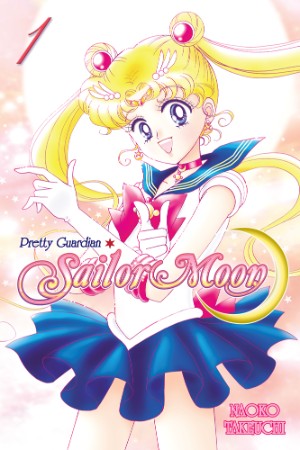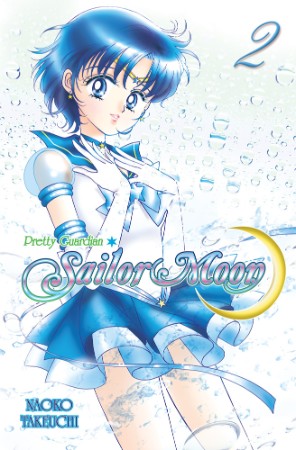When I thought about what I wanted to write about for this month’s Sailor Moon MMF, I decided I wanted to get away from my two favorite senshi, Minako and Hotaru, mostly as I’ve discussed them to death. (You can argue I’ve done the same with Setsuna, but I reserve the right to come back to her later this week anyway.) So I started to wonder if there were senshi that I liked but hadn’t really delved into why I liked them in great detail. Makoto was the first that came to mind. Because really, she’s terrific.
Introduced at the end of the first re-released volume/halfway through the first season of the anime, Makoto pretty much makes an instant impression. She is 5’6″, which given she’s 14 and Japanese, is really significantly tall. She also has many of the features and clothes that a fan of Japanese shoujo manga would instantly associates with ‘yanki’, or a girl in a gang – she has ‘wavy’ hair (the manga goes to great pains to have her note that it’s naturally that way and not a perm), she wears a long skirted school uniform, a carryover from her old school, which one could easily hide weapons in (it’s noted she’s so tall the school can’t get her a new uniform right away – in fact, she doesn’t get one till high school). And of course she’s rumored to have been expelled from her old school for fighting. (Apparently Takeuchi’s original plan was for Makoto to actually *be* a yanki, but her editors told her to dial it back.)
Of course, we eventually find out that Makoto is quite feminine, and loves to cook and do gardening. The interesting thing about this, though, is that this is not followed by her explaining everything else is a misunderstanding. She does fight at school – she fights bullies picking on others. And even though she gets ostracized by her classmates for her scary appearance and tendency towards fights, she’s not going to stop doing this. This becomes even more obvious when she awakens to her role as a senshi, Sailor Jupiter. She takes her role of protecting her princess, Sailor Moon, very seriously, and does not hesitate to treat youma exactly the same way she would treat a bully. Makoto hates injustice as much as the rest of the senshi, and if she can use her height and strength to stop it, well, that’s fine.
I feel I should also mention something else – of the entire inner senshi, Makoto is the only one with no parents – or even parental figure – at all. Takeuchi actually gives us this information offhandedly in a comedic side-story – Makoto gets terrified when she hears an advertisement for an airline, and tells us her parents were killed in a plane crash. Now, Ami and Rei also have parental issues – Ami’s parents are separated, and Rei’s mother has died and she’s estranged from her father. But Ami does at least live with her mother, and Rei has her grandfather. Makoto, from what we can tell, lives alone. How she manages to swing this we’re never quite shown – one fan idea is that she’s given enough for an apartment and necessities from a distant family member – but certainly it does give another reason why she’s good at cooking.
And then there’s the old boyfriend. Now, the manga briefly touched on this in her debut, but the anime began to use it as a running gag. And then once fans got a hold of it and began using it in fanfics… let’s just say that if you ask Sailor Moon fans about Makoto, one thing they will always discuss is that “she always things every guy reminds her of her old boyfriend”. A constant source of humor, it also underscores the loneliness in Makoto’s life. From what we see, Makoto was devastated by the breakup (this is even more true in the anime – the manga downplays it somewhat by having her awaken to her destiny) and is having a lot of trouble getting over it. Sailor Moon is not a series short of girls wearing their hearts on their sleeves, but even among those Makoto stands out.
Again, among the Inners, Makoto has a tendency to be “the normal one”, who can play straight man when any of the others go insane. One can argue Ami also fills this function, but Ami is a “genius type”, whereas, height notwithstanding, Makoto is far more easy to identify with as “one of the girls”. We usually find Makoto talking Usagi and Rei down from a fight (anime only – manga Rei rarely gets that hotheaded) or trying to walk Minako and Usagi back from a harebrained scheme. But as a character, she’s just as notable. Showing female readers and viewers that you don’t have to be either a ‘tomboy’ or a ‘girly girl’, but can feel free to love aspects of both. Oh yes, and also feel free to take no guff from any bullies who might be picking on your friends. Makoto is a fantastic part of the core Sailor Moon cast.
And she’s ‘talented’, too. (Sorry, had to get that in there.)





